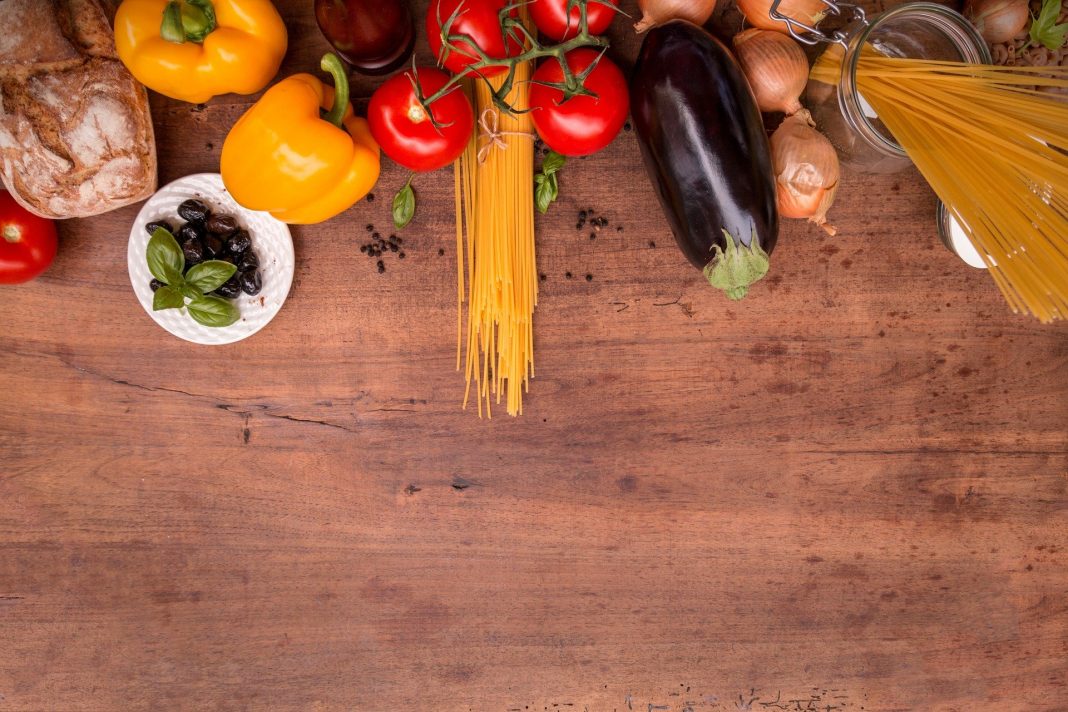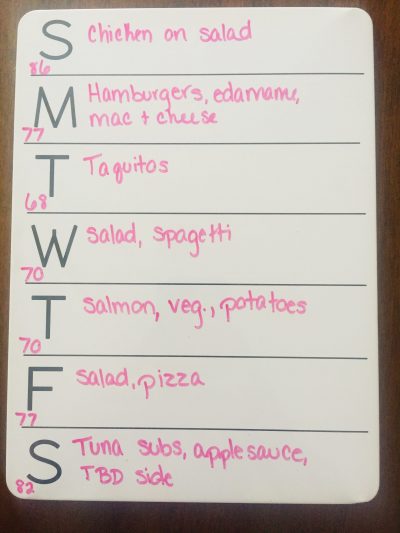 Life is hectic and full of decisions, and dinnertime only compounds that chaos. How can we simplify dinner and grocery shopping, all in one fell swoop? Meal planning solves both of these problems; it’s a five minute chore that saves my sanity week after week. Plus, my kids don’t ask me what’s for dinner anymore; they just check the chart!
Life is hectic and full of decisions, and dinnertime only compounds that chaos. How can we simplify dinner and grocery shopping, all in one fell swoop? Meal planning solves both of these problems; it’s a five minute chore that saves my sanity week after week. Plus, my kids don’t ask me what’s for dinner anymore; they just check the chart!
I started meal planning because I was struggling with dinnertime decision making, never having the right things thawed, and I happened to spot a weekly dry-erase planner in the dollar section at Target (way back when everything was, in fact, a dollar!). They still arrive each year around back to school time, if you’re in the market for one.
Here’s my method and what it accomplishes:
How Does Meal Planning Work?
Meal planning is really just a fancy way to say you have a list of what you’re making for dinner each night that week. It might sound intense or exhaustive, but it actually doesn’t take that much time. You can do other increments of time or multiple meals per day, but I find a week’s worth of dinners to be the right balance for us.
I sit down each Sunday with a list of meals my family likes (divided into main course like my true OCD self); the weather forecast; a pen and shopping list; and my dry erase menu board and dry erase marker.
 First, I mark the high temperature for each day on the corresponding menu day. Then I consult my list of preferred dishes, alternating proteins (chicken one night, fish the next, vegetarian night, beef night, circle back to chicken) and place each meal on the menu. Then I check the pantry and the recipes, and add any missing ingredients to the grocery list. I aim to make dishes I have all the ingredients for before my midweek grocery pickup.
First, I mark the high temperature for each day on the corresponding menu day. Then I consult my list of preferred dishes, alternating proteins (chicken one night, fish the next, vegetarian night, beef night, circle back to chicken) and place each meal on the menu. Then I check the pantry and the recipes, and add any missing ingredients to the grocery list. I aim to make dishes I have all the ingredients for before my midweek grocery pickup.
 This may sound exhaustive, but once you have the list of meals your family likes, it’s really not as hard as it sounds. It takes one less decision off the table each night, and I can glance at the menu and see what I need to put in to thaw the night before. To make your family favorites list, just write down each thing you find yourself making. Then organize it into categories that work well for you. I have chicken, pork, beef, vegetarian, Instant Pot, Side Dishes, and other.
This may sound exhaustive, but once you have the list of meals your family likes, it’s really not as hard as it sounds. It takes one less decision off the table each night, and I can glance at the menu and see what I need to put in to thaw the night before. To make your family favorites list, just write down each thing you find yourself making. Then organize it into categories that work well for you. I have chicken, pork, beef, vegetarian, Instant Pot, Side Dishes, and other.
What if Sunday-me has more optimism for what Thursday-me is capable of than I actually am? It’s dry erase, so I can either erase it and fill in something simpler, or just bump it to another night by drawing an arrow. The meals don’t need to be extravagant either; I try to balance more in-depth recipes one night with frozen pizza the next (or actually, every Friday is salad and frozen pizza night to give me a break! I highly recommend this!).
Other Benefits
Meal planning also helps reduce leftovers being thrown out. When we eat all of the leftovers of a dish, I erase that dish from the menu board. So all the literate members of my family can check the menu board to know what’s in the fridge that they can eat.
I also find that meal planning curbs our tendency to buy food we don’t need or won’t use, so it can help lower grocery bills, too. If you’re looking to further lower that grocery total, you can check the weekly ad to see what’s on sale while menu planning. It’s super helpful around holidays too, allowing you to repurpose all that turkey once turkey sandwiches are tired (turkey taquitos, turkey pot pie, turkey noodle soup; really, you can replace almost any chicken recipe with leftover turkey).
I love having one less decision to make each night during the witching hour. I’m able to make sure I have all the ingredients I need, the meal is right for the weather (yep, I’m the crazy person who can’t eat soup in summer!), and we don’t have wasted food because we forgot it was leftover. It’s a simple time and sanity saving solution that only takes a few minutes each week.



















